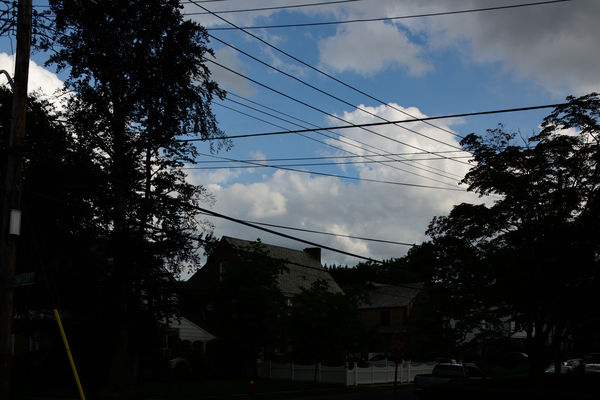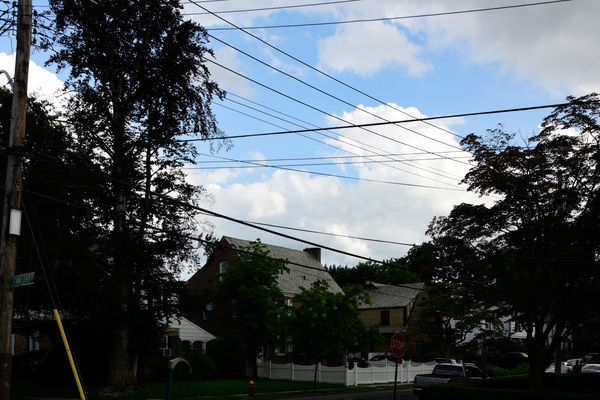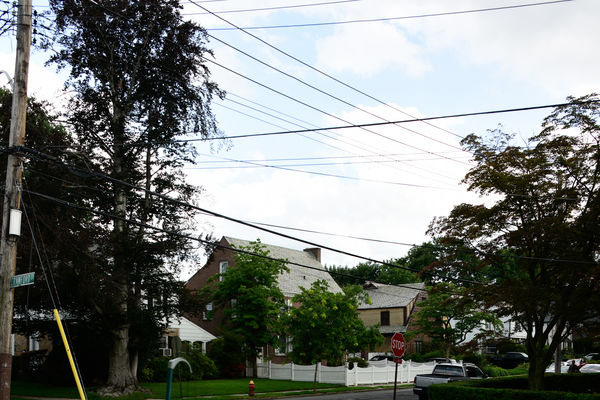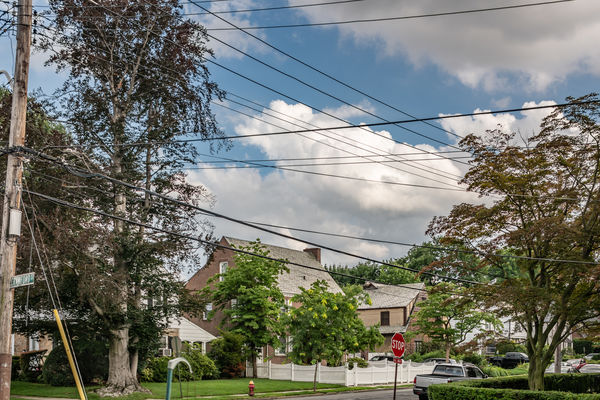RAW vs Jpeg (again)
Jul 18, 2019 07:21:05 #
catchlight..
Loc: Wisconsin USA- Halden Norway
CHG_CANON wrote:
If you're going to post an unprocessed RAW image and ask us to compare it to anything, you've demonstrated you:
1) don't know what you're doing
2) don't know why you're doing it
3) don't know what you should be doing regarding RAW
For the people who choose to edit your image for you, you're just wasting their time. What are they going to do, buy you their software and edit all your images going forward?
1) don't know what you're doing
2) don't know why you're doing it
3) don't know what you should be doing regarding RAW
For the people who choose to edit your image for you, you're just wasting their time. What are they going to do, buy you their software and edit all your images going forward?
Perfect reply in a sea of muddy water!
... and why are over saturated examples being offered that add nothing to answer the question?
Jpeg is the product of editing RAW data. It is like comparing a negative to a photo.
Jul 18, 2019 07:30:41 #
CHG_CANON wrote:
If you're going to post an unprocessed RAW image and ask us to compare it to anything, you've demonstrated you:
1) don't know what you're doing
2) don't know why you're doing it
3) don't know what you should be doing regarding RAW
For the people who choose to edit your image for you, you're just wasting their time. What are they going to do, buy you their software and edit all your images going forward?
1) don't know what you're doing
2) don't know why you're doing it
3) don't know what you should be doing regarding RAW
For the people who choose to edit your image for you, you're just wasting their time. What are they going to do, buy you their software and edit all your images going forward?

















Jul 18, 2019 07:37:25 #
catchlight..
Loc: Wisconsin USA- Halden Norway
Not true...
Raw will actually differ from the "preview" camera generated Jpeg when in Photoshop or lightroom. Its easy to see the difference loading each.
Important things like sharpness and contrast have not been possessed into the RAW image because it is not output, its the input information.
That's another reason Jpeg is a poor choice for editing... taking away sharpness or other qualities the camera produced as an output Jpeg is counter productive.
mwsilvers wrote:
That's odd. They shouldn't.
They should. When the RAW converter applies exactly the same settings as the camera they are the same. Now you can modify the RAW files a lot better than the JPEG but initially when I open the RAW files they look exactly the same as the JPEG counterpart. If I simply save them as JPEG I have the exact same things. But if I don't like it I can make adjustments.
Raw will actually differ from the "preview" camera generated Jpeg when in Photoshop or lightroom. Its easy to see the difference loading each.
Important things like sharpness and contrast have not been possessed into the RAW image because it is not output, its the input information.
That's another reason Jpeg is a poor choice for editing... taking away sharpness or other qualities the camera produced as an output Jpeg is counter productive.
mwsilvers wrote:
That's odd. They shouldn't.
They should. When the RAW converter applies exactly the same settings as the camera they are the same. Now you can modify the RAW files a lot better than the JPEG but initially when I open the RAW files they look exactly the same as the JPEG counterpart. If I simply save them as JPEG I have the exact same things. But if I don't like it I can make adjustments.
Jul 18, 2019 07:45:25 #
catchlight.. wrote:
... When the RAW converter applies exactly the same settings as the camera they are the same. Now you can modify the RAW files a lot better than the JPEG but initially when I open the RAW files they look exactly the same as the JPEG counterpart. If I simply save them as JPEG I have the exact same things. But if I don't like it I can make adjustments.
I think it is unlikely that the raw converter will be able to apply exactly the same settings as the camera without a LOT of tweaking. The camera and the raw converter are completely different software packages, and as such will use different algorithms, which will likely lead to different results. It's not like you can just say "set sharpening to 27". That number will mean something different in different programs.
It is also for that same reason that switching from one software package to another will probably not preserve your original edits precisely.
Jul 18, 2019 07:49:33 #
catchlight..
Loc: Wisconsin USA- Halden Norway
DirtFarmer wrote:
I think it is unlikely that the raw converter will... (show quote)
... It's like trying to take the chocolate chips out of baked cookies vs not putting them into the dough.
Jul 18, 2019 07:57:28 #
Rich1939 wrote:
I certainly don't feel my time has been wasted as my intent was to demonstrate the value of working with RAW files in hope that the OP (and those doubting Thomas's out there) will be encouraged to move beyond their camera's formulaic JPEG output.
It could be that your points 1- -3 are accurate but we learn through inquiry.
It could be that your points 1- -3 are accurate but we learn through inquiry.
Or make a deliberate choice to remain ignorant by not inquiring. However, most of the negative comments about raw may be from those very same willfully ignorant people, who advocate camera generated jpegs over anything else simply because it is within their comfort level. Recording and editing raw files present a cognitive dissonance that, even if the edited raw file has clearly better qualities to it (notwithstanding composition and other qualitative elements that have nothing to do with the method used to arrive at the finished result), they may very well choose to respond with something along the lines of, "I've done it this way forever, and the raw version isn't worth the effort. My way is more than good enough for me!" - all the while remaining completely ignorant of just how easy and fast it is to produce a superior image when you start with a raw file. They also are quick to dismiss an image as unsalvageable, worthy of the trash bin - simply because they cheated themselves out of the opportunity to leverage the dynamic range capabilities of their cameras by choosing to shoot only jpeg. A case of sour grapes it seems. There are a complete other group of photographers - the raw+jpeg crowd - that want to shoot raw, but somehow can't let go of the jpeg "crutch" and record two files with identical settings, once again failing to record the raw file with a more optimal exposure settings.
This is what the OP poses for comparison, and for this image there will be subtle differences between the two, if you simply convert the raw file, without adjustment, to jpeg.
In contrast, the images below were shot as a bracketed set of jpegs, SOOC, and the last one is the result of an exposure optimized for raw capture, and processed to jpeg. There isn't a single SOOC jpeg that could capture the shadow detail AND the highlights in the clouds in a single shot like the raw capture did. I metered for the brightest area in the cloud, added two stops, did a little post processing (about 2 mins) to dodge the shadows and burn in the sky and clouds (no different than had I been using an enlarger and a wet process about 50 yrs ago), to produce the final result.
I think this is a better illustration of why there can be a clear advantage to using a raw workflow. Granted, with the OP's images there is "normal" contrast with no extremes so the benefit to shooting raw in such cases is slight, but adopting a raw workflow for ALL images produces better consistency and fewer deletes, at least as far as exposure is concerned. Shooting raw + jpeg is like leaving money on the table in a business negotiation.
Jul 18, 2019 08:02:00 #
johneccles wrote:
I haven't used RAW for several years but I am going to try photographing in RAW once again
Attached are two identical photographs taken through my office window, one in RAW and one in Jpeg.
In your opinion which one is better.
Attached are two identical photographs taken through my office window, one in RAW and one in Jpeg.
In your opinion which one is better.
I personally think the raw is better and could be even more so with a little post work.
Jul 18, 2019 08:05:59 #
DirtFarmer wrote:
I think it is unlikely that the raw converter will... (show quote)
Why don't you try it and see if your opinion has validity. I don't know what a "LOT" of tweaking means. BTW, if you use Canon and Nikon cameras, the propriety software converters provided with their cameras will give you EXACTLY the same results - they will even add lens profiles (for their lenses), and allow you to adjust the various camera settings in the software in the same manner, and in Nikon's case, you can even resolve Active-D Lighting, and the similar feature in Canon's DPP converter.
Jul 18, 2019 08:09:53 #
rmalarz wrote:
Richie, it's not even that. It's equivalent to the latent image on a film negative. Nothing can be seen until it's processed.
The difference, RAW and jpg, is equivalent to a film photograph vs. a polaroid photography. Not a lot can be done with the Polaroid, as it arrives cooked per the manufacturer's specifications. Film can be a bit more flexible. The amount depends on color negative/transparency or black and white negative.
--Bob
The difference, RAW and jpg, is equivalent to a film photograph vs. a polaroid photography. Not a lot can be done with the Polaroid, as it arrives cooked per the manufacturer's specifications. Film can be a bit more flexible. The amount depends on color negative/transparency or black and white negative.
--Bob

Jul 18, 2019 08:12:38 #
DirtFarmer wrote:
I think it is unlikely that the raw converter will... (show quote)
You say: "I think it is unlikely that the raw converter will be able to apply exactly the same settings as the camera without a LOT of tweaking. The camera and the raw converter are completely different software packages..."
True, unless the raw converter you use is the software provided by your camera manufacturer, no?
I have no personal experience with this, but have repeatedly been told that when you use Nikon software to develop Nikon camera produced raw files it will apply the same pictorial settings you used in your camera (sharpness, saturation, etc).
If this isn't true, someone please set me straight...
Edit: I wrote this before I saw Gene's post. Thanks Gene!
Jul 18, 2019 08:22:02 #
srt101fan wrote:
You say: "I think it is unlikely that the raw... (show quote)
It's trueish. The truthiness of the assessment depends on a few factors, but for the most part, if you hit <AUTO> on the exposure adjustments and lens corrections and con't change the in-camera white balance when processing the RAW on your computer using the camera maker's software, you should end up with much the same images the JPEG from the camera with the same settings.
Of course, it begs the question of why you want images that look just like you could have created directly from the camera? If you want the flexibility, just in case, the RAW approach to <AUTO> results does offer that flexibility, along with more time, more effort, more storage needs, etc.
Jul 18, 2019 08:22:56 #
catchlight..
Loc: Wisconsin USA- Halden Norway
al13 wrote:
I personally think the raw is better and could be even more so with a little post work.
Amazing answer...
The RAW image is a preview of what the Jpeg will look like after you process it into a Jpeg. RAW is only information.
Jpeg is an image completed and possessed from RAW either by the camera or software you use to edit.
Jul 18, 2019 08:45:12 #
Gene51 wrote:
Or make a deliberate choice to remain ignorant by ... (show quote)
A great example of what I said earlier but was too lazy to provide an example. As conclusive proof as one could wish. Well done.
Jul 18, 2019 09:05:36 #
Gene51 wrote:
Or make a deliberate choice to remain ignorant by ... (show quote)
For many photographers there is much more to the craft than getting the most accurate record of the image they see in the view finder, for them that is only the first step along the way to producing the image they see using their imagination. While you can be creative starting with a JPEG, the raw file gives you a far better starting point as nothing in the original exposure has been discarded.
There are additional benefits to learning to process from raw files, for instance look at the fun UHH members are having as they let their creative juices flow in the Post Processing section, https://www.uglyhedgehog.com/s-116-1.html. Look for the Challenge posts. The current challenge is ‘stickied’ in the first position.
Jul 18, 2019 09:06:57 #
Maybe a better response to our OP could have been: If you we're unsure where to start in RAW processing, go to the Post Processing section, attach you ORF RAW example and ask for help. Include a reference to your Zoner Photo Studio software in the hope someone can provide instructions specific to this tool.
If you want to reply, then register here. Registration is free and your account is created instantly, so you can post right away.







